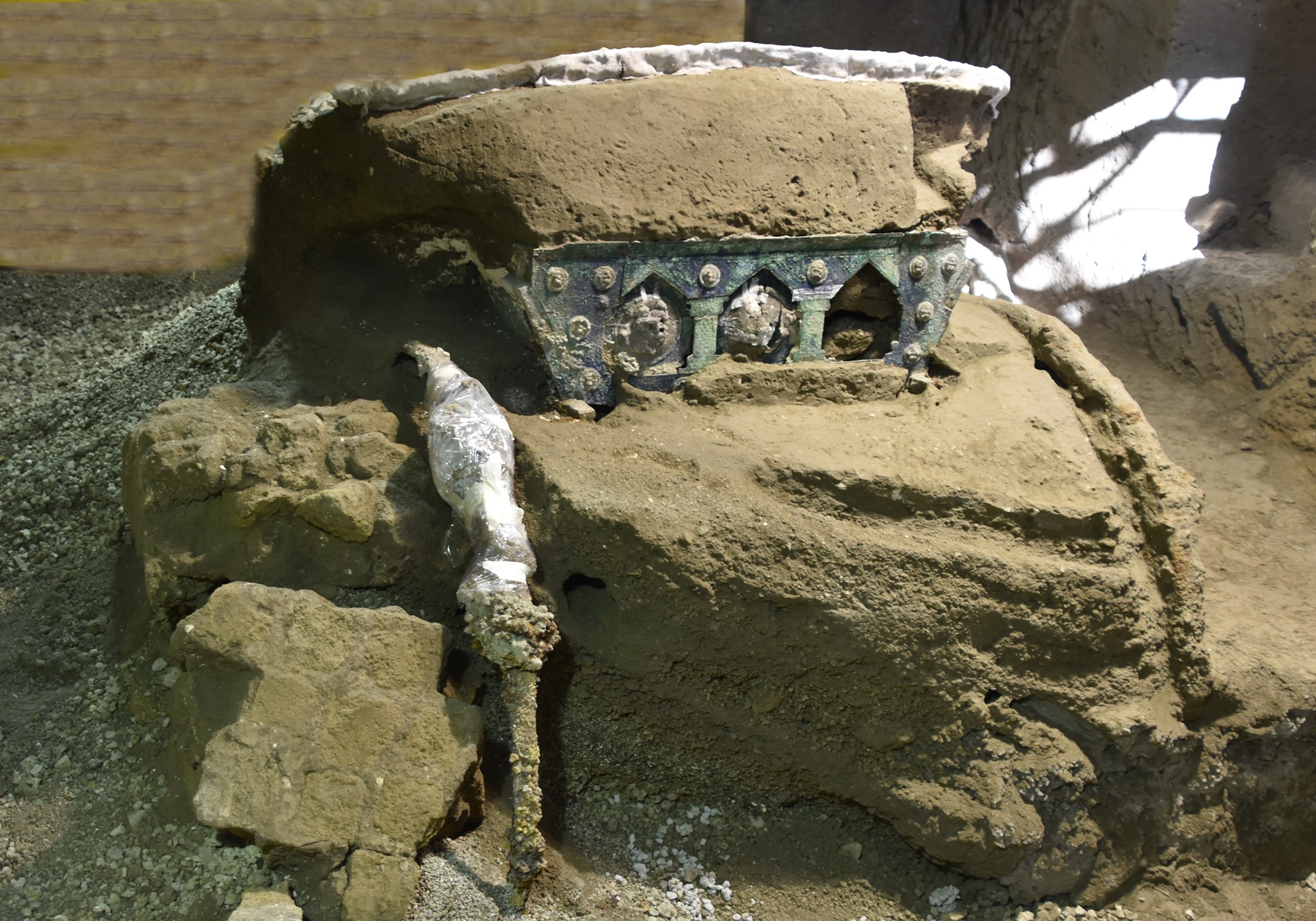Today we talk about nothing else. The news spread by all the national news. Why when Pompei returns one of its treasures is as if another piece of history of the Campania archaeological site is revealed. A four-wheeled ceremonial chariot was found during one of the last excavations. Composed of iron elements, bronze and tin decorations. And again with mineralized wooden remains, the imprints of organic elements (from ropes to remains of plant decorations). The discovery in the portico in front of the stable. And it is a new find that comes back to light in a place that had already revealed the remains of 2018 equidae in 3, including a harnessed horse.
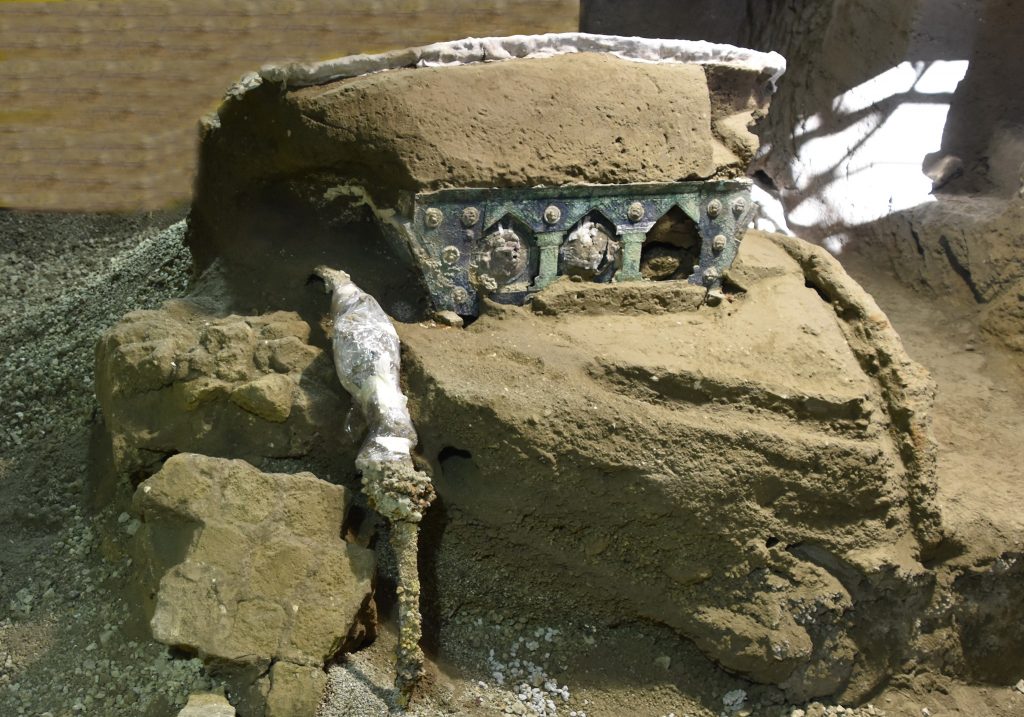
A parade float uncovered from the excavation of a villa
The extraordinary discovery was announced by the Archaeological Park of Pompeii and by the Procura della Repubblica of Torre Annunziata. The find emerged during the excavation of the suburban villa in Civita Giuliana, north of Pompeii. In the area for the protection of the finds and their conservation, a collaboration has been active since 2017 and a Memorandum of Understanding signed in 2019 to counter the risk of illegal activities such as the theft of ancient finds. The peculiarity of this discovery is that it has found a unique find in an excellent state of conservation.
What was the wagon for
From the surveys carried out, the cart would have been used not for everyday uses or agricultural transport, but to accompany the community's festive moments, parades and processions. The scenes of the medallions refer to Eros (Satyrs and nymphs). It is not excluded that it could be a chariot used for rituals related to marriage, to lead the bride to the new home.
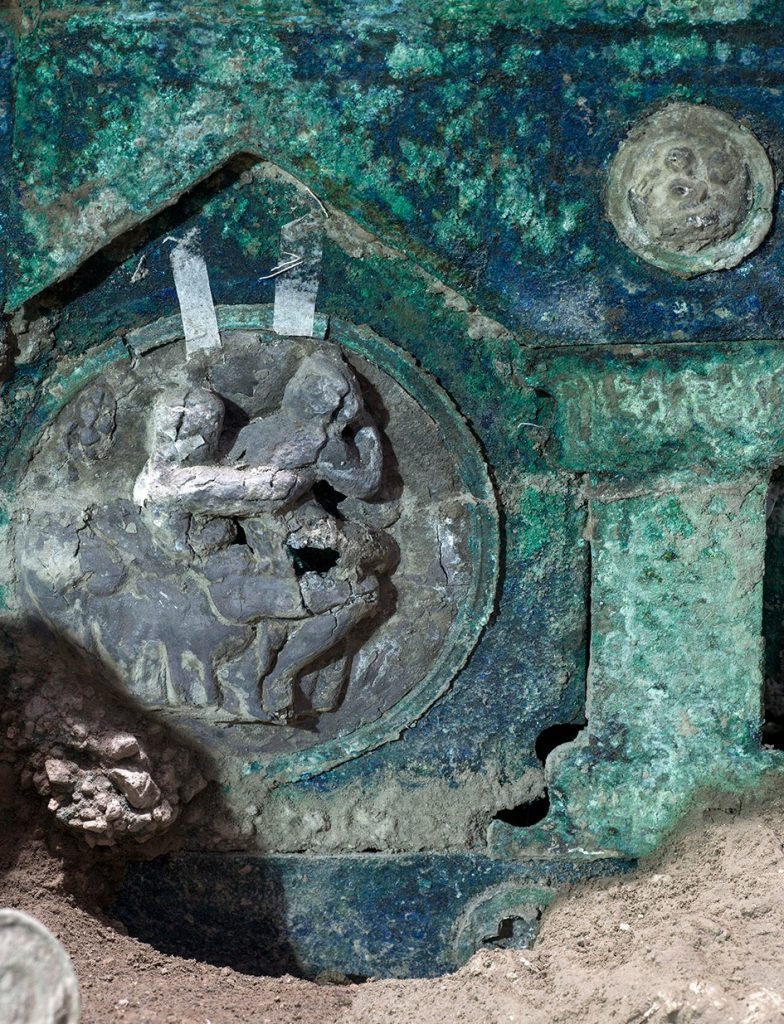
Excavations in the area where the cart was found
Not only excavation activities on the site, but also the possibility of verifying the extent of the tunnels and preventing them from being plundered. In fact, unfortunately, the damage to the site's heritage is numerous. The excavation showed a technical-operational complexity as the environments to be investigated are partly below and close to modern homes. To work a team of specialists, archaeologists, architects, engineers, restorers, volcanologists, skilled workers.
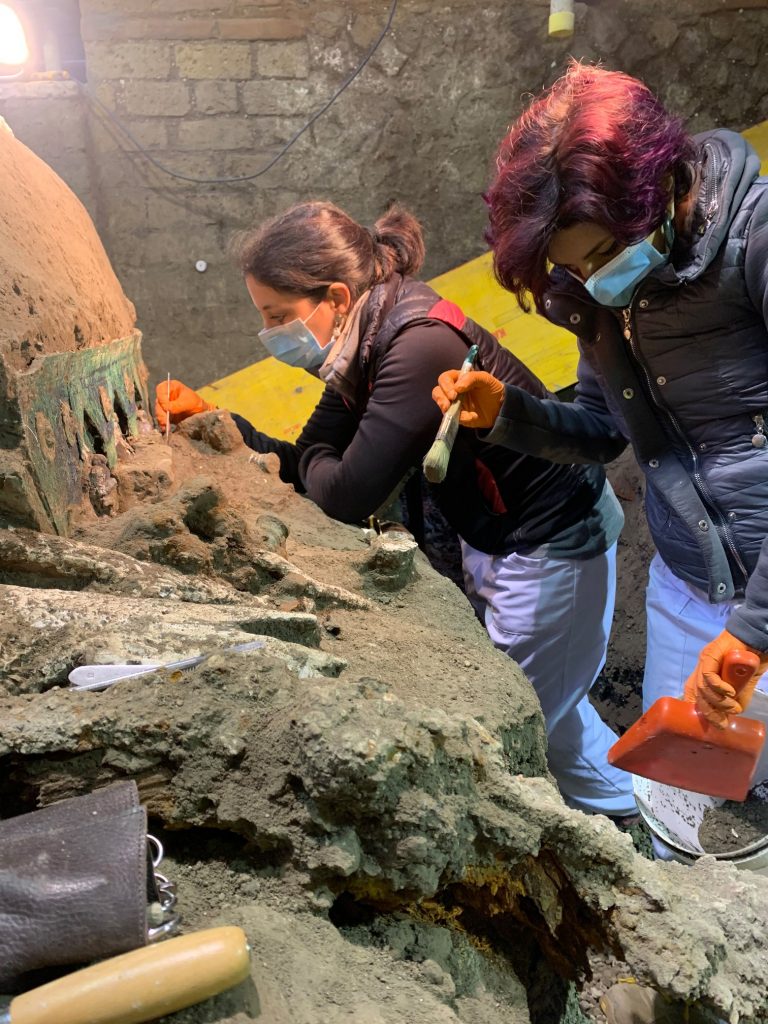
The particularity of the place
From the excavations it emerges that the attic seems to have been made of deciduous oak, used in Roman times to create structural elements. The consolidated wooden floor, cleaned and removed from the excavation area. "Considering the extreme fragility of the wagon and the risk of possible interventions and damage to illegal immigrants - reports the site of the Park - the team also worked every weekend starting from mid-January. Both to guarantee its conservation and to give a strong sign of the protection action on the Heritage. Exercised by the Park in synergy with the Torre Annunziata Public Prosecutor's Office and the Carabinieri of the Cultural Heritage Protection Unit of Naples, assisted by investigators from the Carabinieri Group Command of Torre Annunziata. This collaboration also led to the participation of Park technicians to the ongoing trial against the alleged clandestine diggers who have hit this villa so heavily in recent years".
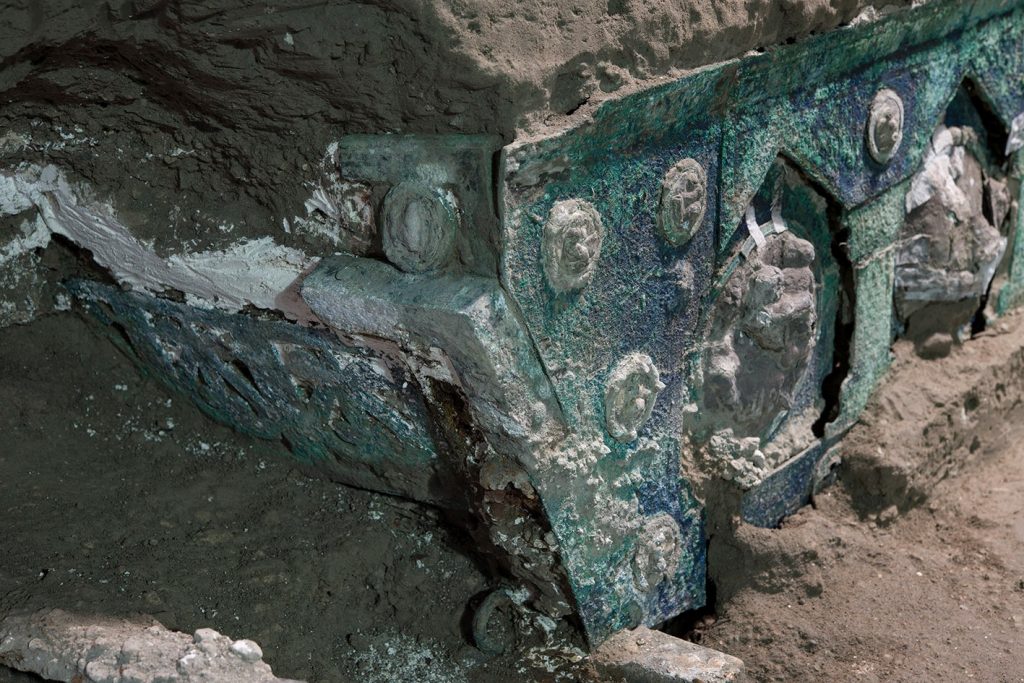
The considerations of the ministry
"Pompei continues to amaze with its discoveries, and will remain so for many years to come with twenty hectares still to be excavated - commented the Minister of Culture Dario Franceschini -. But above all it demonstrates that you can do enhancement. pi can attract tourists from all over the world and at the same time you can do research, training and studies. And a young director like Zuchtriegel will enhance this commitment ”. "It is an extraordinary discovery for the advancement of knowledge of the ancient world - said Massimo Osanna, outgoing Director of the Archaeological Park -. In Pompeii, vehicles for transport were found in the past. Csuch as that of the Menander's house, or the two chariots found in Villa Arianna (one of which can be admired in the new Antiquarium Stabiano). M.nothing like the Civita Giuliana chariot".

